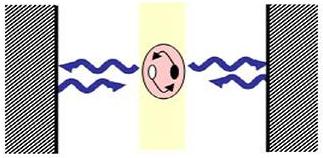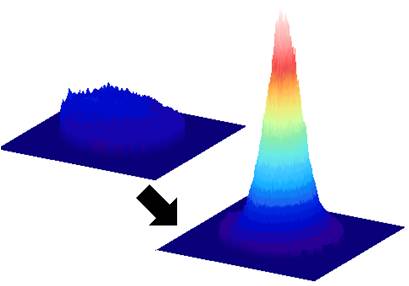 Microcavities represent a new interface where light and matter meet to produce remarkable nonlinear effects. This physics can be exploited in the realisation of the next generation of low threshold lasers.
Microcavities represent a new interface where light and matter meet to produce remarkable nonlinear effects. This physics can be exploited in the realisation of the next generation of low threshold lasers.
 The microcavities are constructed in a way that confines photons between highly reflective mirrors, causing them to bounce back an forth. These photons interact with excitions leading to the onset of a new quasi-particle that exhibits properties of light and matter - Polaritons.
The microcavities are constructed in a way that confines photons between highly reflective mirrors, causing them to bounce back an forth. These photons interact with excitions leading to the onset of a new quasi-particle that exhibits properties of light and matter - Polaritons.
 Because polaritonic quasiparticles have extraordinarily light masses and they are bosons, they can condense together in a single quantum state. This makes for extremely unusual emitters, as well as new solid-state devices exhibiting Bose-Einstein condensation at room temperature.
Because polaritonic quasiparticles have extraordinarily light masses and they are bosons, they can condense together in a single quantum state. This makes for extremely unusual emitters, as well as new solid-state devices exhibiting Bose-Einstein condensation at room temperature.
